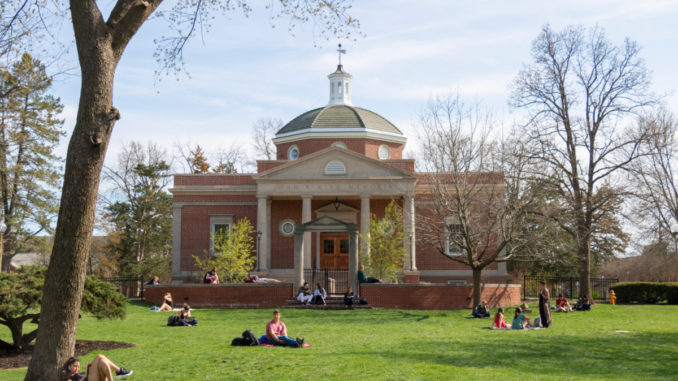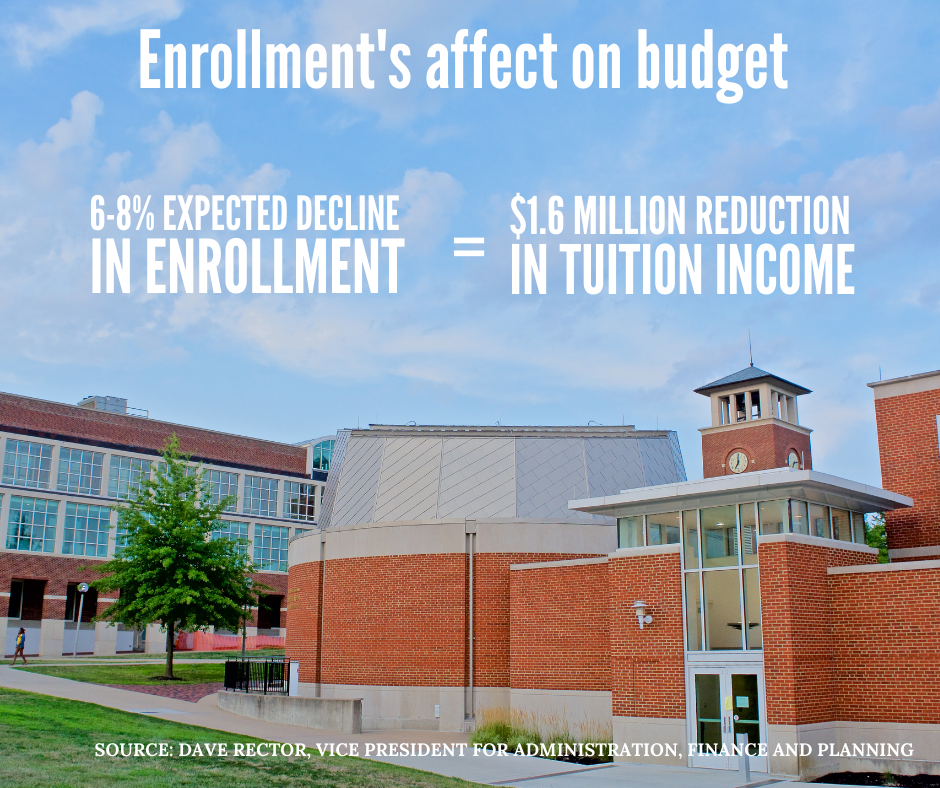
Truman State University expects to see a 6-8% decline in enrollment next academic year, which translates to a $1.6 million reduction in tuition income.
Funding for the University comes mainly from state funding and tuition.
The University is also going to see 20 faculty retirements between January and May. When the faculty members retire, the University will take that opportunity to reconfigure some positions which will help save money in the budget.
“We have quite a few retirements coming up in different areas, both faculty and staff,” Dave Rector, vice president for administration, finance and planning, said. “So it may be that some positions may just temporarily not be filled, or some may be reconfigured.”
Positions are often reconfigured to fill the roles of multiple positions.
The change in enrollment numbers can be associated with the pandemic and demographics changing across the world, Tyana Lange, vice president for enrollment management and marketing, said. There is also the popular press questioning the value of an education, Lange added.
The enrollment projections are early, so the numbers can change as more information is collected.
The demographic changes are due to the fact that people are having fewer children, so there are less students graduating high school, meaning the amount of students who might attend Truman is smaller, Lange said.
“There is also a supply and demand issue,” Lange said. “There is way more supply in colleges across the world than there is demand. So we have this issue: even in the state of Missouri, there are more colleges than we truly need for the number of students that are graduating high school.”
Smaller classes are moving through the University as well, which is why changing trends in enrollment takes time, Lange noted. A small freshman class will mean a small sophomore class the next year and so on.
Lange explained the enrollment cycle is another difficulty in turning enrollment around. The enrollment cycle begins around the summer between a high school student’s junior and senior years.
“People may assume that with hiring a new director of admissions that it will turn on a dime, but it doesn’t because that decision-making process is almost a full year,” Lange said. “Even when you do start turning enrollment around, students are here for four years. So if we bring in a small class, that small class is here for four years.”
Admissions can be seen as a funnel, Lange said. At the top of the funnel are students that Truman is trying to get its name in front of. Moving down the funnel are students who have actually applied. Then, students who are accepted and finally, at the bottom of the funnel, students who have committed to going to Truman.
This is seen as a funnel because there are less students farther down, Lange explained. There will be more students who apply to Truman than those who actually end up attending, Lange added.

